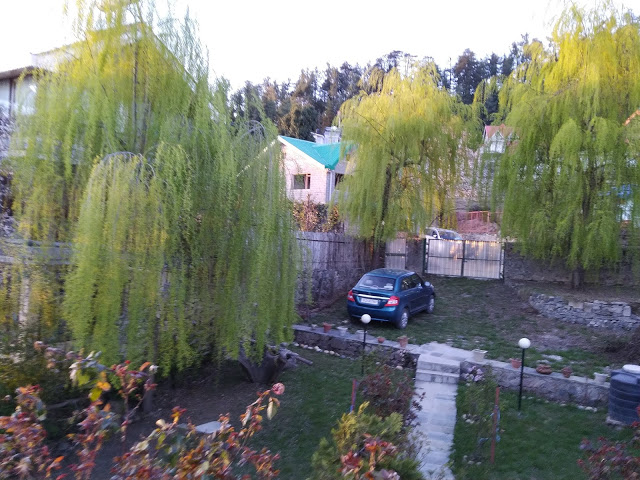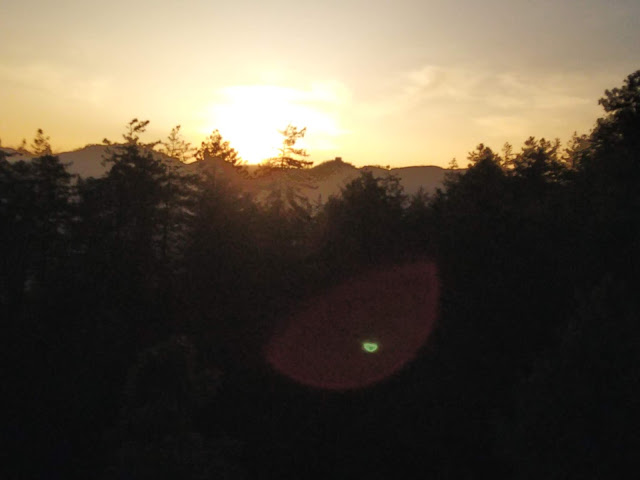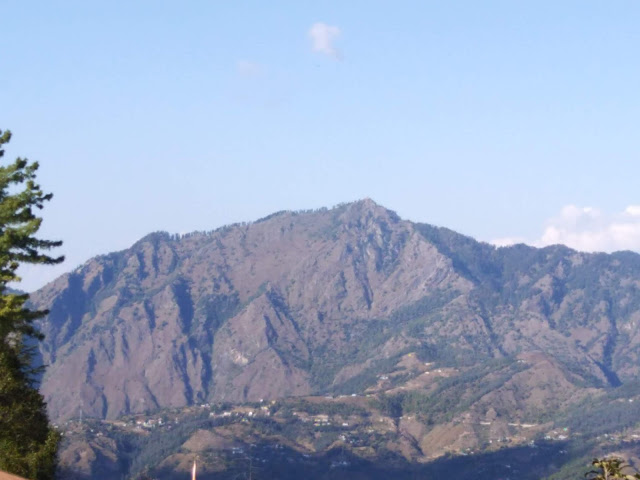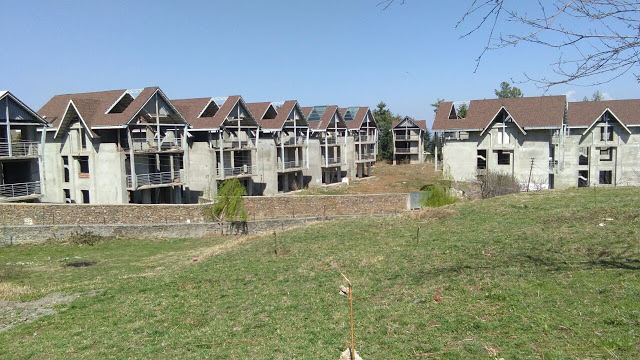Come March every year and I cannot wait to get back to my tiny village in the mountains after a seven month , soul destroying hiatus in the wasteland that is Delhi. Purani Koti is 4 kms on a side road from Mashobra, 16 kms from the concretised and car swamped purgatory of Shimla. I have built a cottage there and have tried to atone for my large bureaucratic footprint of 35 years by planting, over the years, about 100 trees on my land of which 60 or so have survived, a much better rate than that of the forest department! They include oak, deodar, chinar and horse chestnut; the most prolific, however, are the weeping willows which belie their name by looking luxuriantly happy for most of the year.

I like to be there in March and personally experience how man, animal and nature all welcome the arrival of spring. During the four months of winter when we can receive as much as two feet of snow PK goes into hibernation. Most outside activities cease, construction of Sec. 118 houses and hotels are thankfully suspended, all bird life except the tiny tits disappears. All “outsiders” including “domiciled” ones like me head back to the metros, leaving to Geetika the onus of keeping our flag flying in these freezing times! Geetika has so fallen in love with this place that she braves it out through much of the winter with her two labradors and Man Friday. She runs a charming homestay in her cottage but I have a sneaking feeling that that is just an excuse for her to stay away from Gurgaon! How can one blame her?

The willows and the wild rhododendrons are the first to start leafing and flowering, followed in quick succession by the rock begonias, hydrangias, geraniums and nasturtiums: my garden explodes with a new colour every day. The roses, as befits their exalted status, make me wait another month before flashing their blood red visiting cards. Among the fruit trees the apricot( khumani)’s blossoms stain the landscape a soft pink by the end of March; a few weeks later the apple and “nashpati” flowers too will add their lilac and white hues to nature’s palette. I never tire of watching the colours appear one by one, in a choreographed pattern devised by nature, unchanged for tens of thousands of years, since even before we crawled out of the primeval sludge.
On cue, the butterflies, bees and bumblebees miraculously reappear though sadly not in the numbers of fifteen years ago when I first arrived here. They flit frantically from flower to flower as if renewing friendships of the previous year. There used to be dragonflies earlier but they have now gone-I hope they will come back someday.
The gaily coloured and tiny songbirds, barbets and Himalayan magpies with their extravagant tails will be here soon, followed by the incredibly green parrots whose non-stop chattering is the avian equivalent of our social media. The elusive jungle fowl and khaleej pheasant can be spotted again at dawn and dusk in our dense forests of deodar, blue pine and oak, furiously rummaging around in the leaf litter as if looking for something left behind the previous summer.

After seven months of living in a neon reflecting grey shroud I can see the sun and the stars again, greeting the morning orb with a prayer on my lips and wonder in my heart: is this the same sun that one dreads in Delhi? The night sky is like a star sequinned bosom pressing down on my upturned face- silent, comforting and all embracing. The only occasional sound is that of a jackal complaining plaintively of his lot in life or the learned hoot of a barn owl. Its Eden without the serpent.

The whole village comes to life again: children in smart new uniforms excitedly hop their way to school, labourers from Nepal and Bihar return to their old jobs in construction and orchards, even the PWD workers survey the pot holes while smoking beedis wondering whether its worth the effort of filling them up. ( It’s not!). The farmers are back in their now sun drenched fields, sowing the potatoes, peas and cauliflowers that will see them through the year; the orchardists complete the last of many sprays on their apple trees, praying to Shali Mata, the local deity, to spare them the hailstorms that can wipe out a whole year’s earnings in a matter of minutes.

But the rhythms of Eden are slowly changing. Winds of change- sharp, short gusts as yet but becoming stronger each year- have started blowing through Purani Koti. Spring arrives a few days earlier every year, confusing the plants, birds and insects which have to scramble to keep apace. Villagers are shifting from vegetables to stone fruits and spur variety of apples: these involve less labour, recurring costs and risks; the returns per acre are also much higher. There is less water for irrigation each year: vegetables require regular watering, fruit trees do not. The whole economy of the village
There is, however, one major discordant note in these changing rhythms: the ubiquitous and unwelcome conversion of rich, productive agriculture lands into plots for building of ugly “villas”, hotels. guest houses and holiday homes for well heeled outsiders looking for second and third homes. They contribute little to the rural economy in terms of jobs or purchases, they rarely spend more than a couple of weeks a year in them. But they despoil the green environment, strain the limited infrastructure of power, water, roads; dump their garbage and plastics in the forests and foul the little streams. Dozens of fruit trees are felled and whole orchards razed to make way for these pestilential structures. Once open grazing fields have been built over, to the point where villagers have stopped rearing cattle because there is no grazing available. So now milk, butter, ghee and even manure-once available in abundance locally- is brought in from outside in plastic bags: one virtuous circle of consumption has been broken.

The state’s policy makers have already devastated the towns in their quest for quick bucks from a tourism model that is clearly unsustainable; they should not repeat this mistake in the rural areas like Purani Koti. The govt. should not be recklessly approving hotels, apartment blocks, guest houses and holiday homes in the villages but should promote only homestays and B+Bs: these do not involve diversion of precious agricultural land or orchards, do not strain local infrastructure yet provide profitable livelihood options for the villagers. This will also go a long way in stemming the tide of rural migration.
This is, of course, all wishful thinking on my part; it will not happen in my lifetime. I don’t think my little Eden will retain its natural splendour much longer. I only hope that I’ve shuffled off this mortal coil when the serpents take over.
[ All images by the author. He may be excused since he is still coming to grips with his first smart phone!]
| The author retired from the IAS in December 2010. A keen environmentalist and trekker he has published a book on high altitude trekking in the Himachal Himalayas: THE TRAILS LESS TRAVELLED.
His second book- SPECTRE OF CHOOR DHAR is a collection of short stories based in Himachal and was published in July 2019. His third book was released in August 2020: POLYTICKS, DEMOCKRAZY AND MUMBO JUMBO is a compilation of satirical and humorous articles on the state of our nation. His fourth book was published on 6th July 2021. Titled INDIA: THE WASTED YEARS , the book is a chronicle of missed opportunities in the last nine years. Shukla’s fifth book – THE DEPUTY COMMISSIONER’S DOG AND OTHER COLLEAGUES- was released on 12th September 2023. It portrays the lighter side of life in the IAS and in Himachal. He writes for various publications and websites on the environment, governance and social issues. He divides his time between Delhi and his cottage in a small village above Shimla. He blogs at http://avayshukla.blogspot.in/ |




Avai ji,
Truly enjoyed reading this; you have brightened my day! Please keep the good stuff coming, and hope to bump into you in Mashobra where my mother too has lived in a small cottage for many years, and uses every excuse to rush back ‘home’ (Covid-shovid notwithstanding) from the dreary confines of my home in Gurgaon 🙂
She will be welcome any time, Aditya!